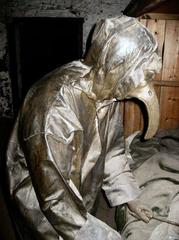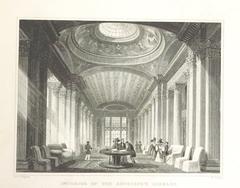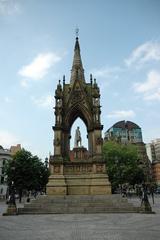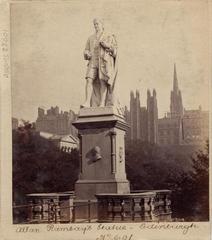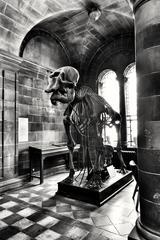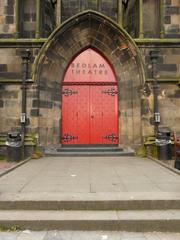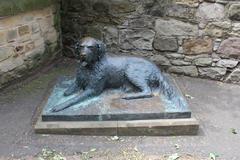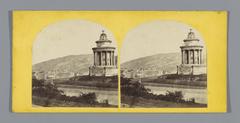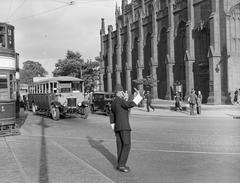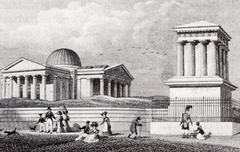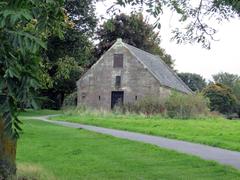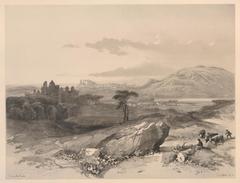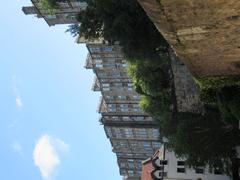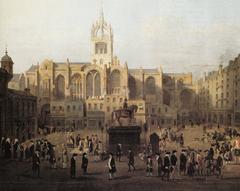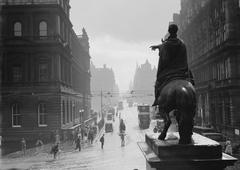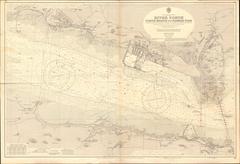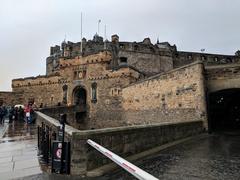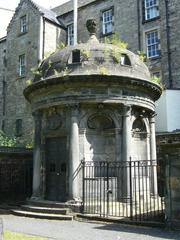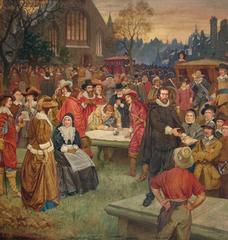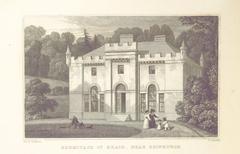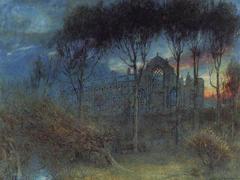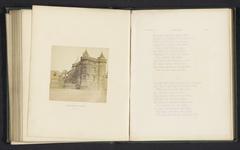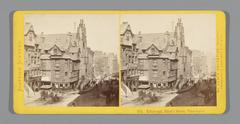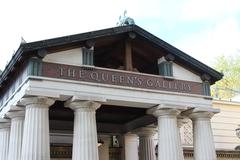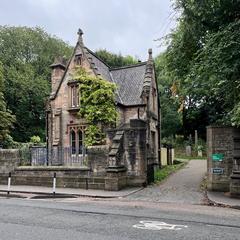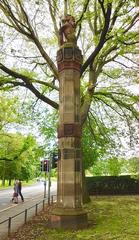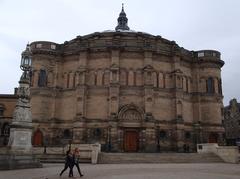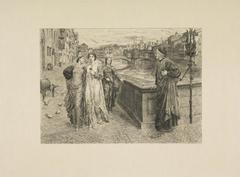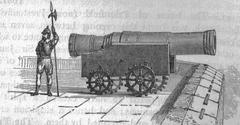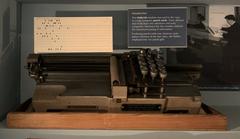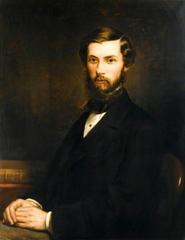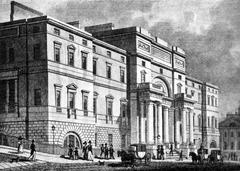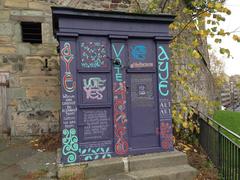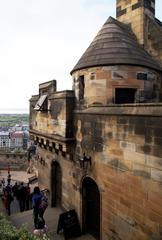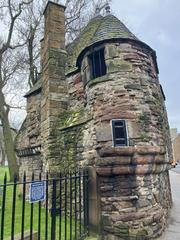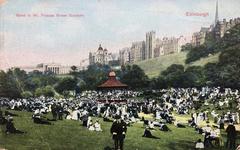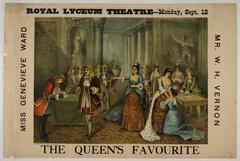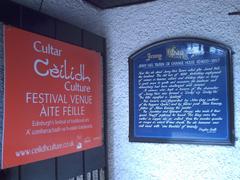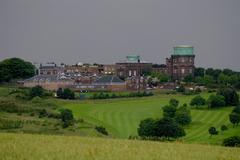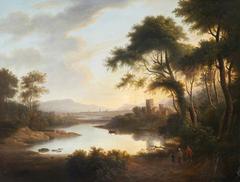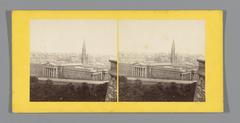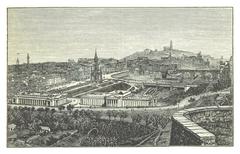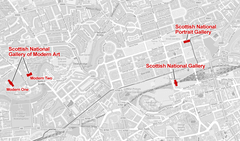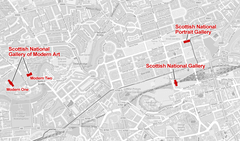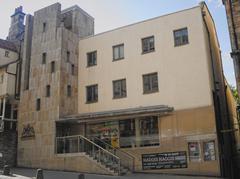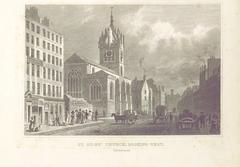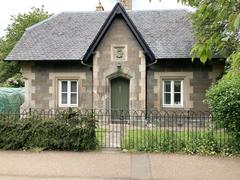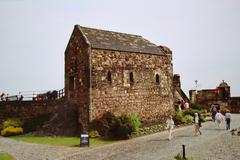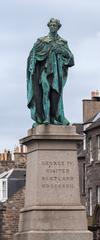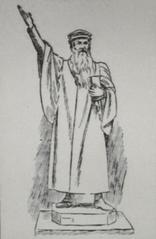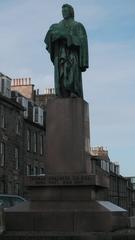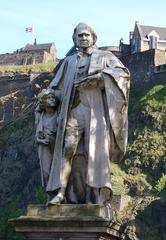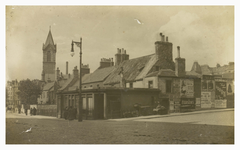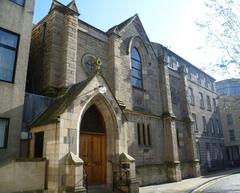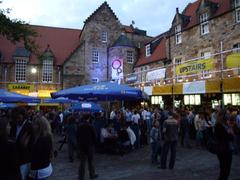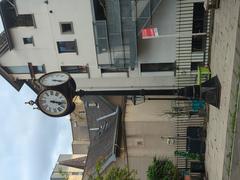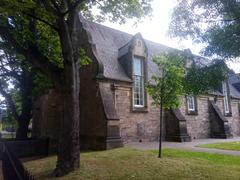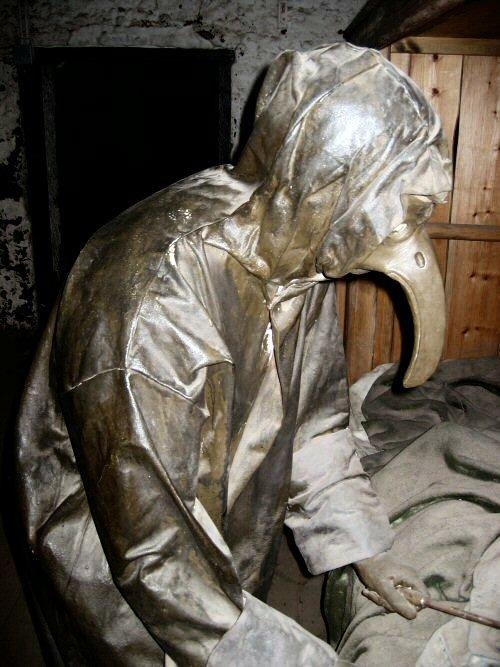
Edinburgh City Chambers Visiting Guide: Hours, Tickets, and Historical Insights
Date: 17/07/2024
Introduction
The Edinburgh City Chambers, an iconic landmark located on the Royal Mile in Edinburgh, United Kingdom, serves as a significant historical, architectural, and civic hub. Its origins date back to the 18th century when it was initially constructed as the Royal Exchange between 1753 and 1761 by the renowned Scottish architect John Adam. The building’s neoclassical design, characterized by Corinthian columns and intricate plasterwork, reflects the architectural grandeur of the era (Historic Environment Scotland).
Over the centuries, the City Chambers have transformed from a commercial center to the administrative heart of Edinburgh, housing the City of Edinburgh Council since 1811. This evolution highlights the building’s role in shaping the city’s governance and its significance in political milestones, including the signing of the Edinburgh Agreement in 2012 (BBC News).
Today, the Edinburgh City Chambers continue to be a vibrant part of the city’s civic life, offering guided tours that delve into its rich history and architectural splendor. Visitors can explore its opulent interiors, witness the grandeur of the Council Chamber, and appreciate the cultural events hosted within its walls. This comprehensive guide aims to provide an in-depth overview of the City Chambers, including visiting hours, ticket information, travel tips, and nearby attractions to ensure a memorable visit.
Table of Contents
- Introduction
- History of Edinburgh City Chambers
- Visiting Hours and Tickets
- Travel Tips
- Historical Events and Milestones
- Preservation and Restoration
- Cultural and Civic Importance
- Notable Figures Associated with the City Chambers
- Modern-Day Relevance
- FAQ
- Conclusion
- References
History of Edinburgh City Chambers
Origins and Early History
The origins of the Edinburgh City Chambers date back to the 18th century. Initially, the site was occupied by the Old Tolbooth, a medieval building that served as a council house, court, and prison. The Old Tolbooth was demolished in 1817, and the City Chambers were constructed in its place. Construction began in 1753 and was completed in 1761, with the building designed by John Adam, a prominent Scottish architect, in the neoclassical style. The City Chambers were officially opened on August 23, 1761, and have since served as the headquarters of the City of Edinburgh Council.
Architectural Significance
The Edinburgh City Chambers is an exemplary piece of neoclassical architecture. The building’s façade features a grand portico with six Corinthian columns, which support a pediment adorned with the city’s coat of arms. The use of classical elements such as columns, pediments, and symmetrical proportions reflects the influence of ancient Greek and Roman architecture, which was popular during the 18th century. The interior is equally impressive, with ornate plasterwork, grand staircases, and elegant meeting rooms, including the notable Council Chamber with its ceiling painted by Alexander Runciman.
Visiting Hours and Tickets
The Edinburgh City Chambers are open to the public, and guided tours are available to provide deeper insights into its history and significance. Typical visiting hours are from 9:00 AM to 5:00 PM, Monday through Friday. It is recommended to check the official website for the most up-to-date information on opening hours and any potential closures due to private events or holidays.
Ticket prices for guided tours vary, with discounts available for students, seniors, and children. Booking in advance is highly recommended, especially during peak tourist seasons.
Travel Tips
Getting There
The Edinburgh City Chambers are centrally located on the Royal Mile, making them easily accessible by public transport. Several bus routes and the Edinburgh Waverley railway station are within walking distance.
Accessibility
The building is wheelchair accessible, with ramps and elevators available for use. It is advisable to contact the venue in advance to arrange any specific accessibility needs.
Nearby Attractions
While visiting the City Chambers, consider exploring nearby attractions such as St Giles’ Cathedral, the National Museum of Scotland, and Edinburgh Castle.
Historical Events and Milestones
Over the centuries, the Edinburgh City Chambers have been the site of numerous significant events and milestones in the city’s history. One of the most notable events was the signing of the Act of Union in 1707, which united the Kingdom of Scotland and the Kingdom of England to form the Kingdom of Great Britain. In 1999, the City Chambers were the site of the first meeting of the newly established Scottish Parliament, marking a significant milestone in Scotland’s political history.
Preservation and Restoration
The Edinburgh City Chambers have undergone several preservation and restoration projects to maintain their historical and architectural integrity. In recent years, a major restoration project was undertaken from 2012 to 2014 to repair and restore the building’s exterior and interior features, ensuring that the City Chambers remain a vibrant and functional part of Edinburgh’s civic life.
Cultural and Civic Importance
The Edinburgh City Chambers serve as the headquarters of the City of Edinburgh Council and are a central hub of political and civic activity. The building is a popular destination for tourists and visitors, offering guided tours that explore its grand interiors and important historical events. Additionally, the City Chambers host a variety of cultural events and exhibitions throughout the year, showcasing Edinburgh’s rich history and vibrant cultural scene.
Notable Figures Associated with the City Chambers
Throughout its history, the Edinburgh City Chambers have been associated with numerous notable figures, including Sir Walter Scott, who served as the Clerk of Session from 1806 to 1832, and Sir William Chambers, who served as Lord Provost of Edinburgh from 1865 to 1869. Their contributions to Edinburgh’s literary, cultural, and civic life are commemorated within the building.
Modern-Day Relevance
Today, the Edinburgh City Chambers continue to be a vital part of the city’s civic and cultural life. The building remains the headquarters of the City of Edinburgh Council and serves as a venue for important civic events, including council meetings, official receptions, and public ceremonies. Its central location on the Royal Mile and impressive architecture make it a must-see destination for anyone visiting Edinburgh.
FAQ
Q: What are the visiting hours for Edinburgh City Chambers?
A: The typical visiting hours are from 9:00 AM to 5:00 PM, Monday through Friday. It is recommended to check the official website for the most up-to-date information.
Q: How much do tickets for guided tours cost?
A: Ticket prices vary, with discounts available for students, seniors, and children. Booking in advance is highly recommended.
Q: Is the building wheelchair accessible?
A: Yes, the building is wheelchair accessible with ramps and elevators available.
Q: Can I take photographs inside the Edinburgh City Chambers?
A: Photography is generally allowed, but it is advisable to check with the staff for any restrictions, particularly in areas where official functions are taking place.
Conclusion
In conclusion, the Edinburgh City Chambers stand as a testament to the city’s rich historical and architectural heritage. From its origins as the Royal Exchange to its current role as the headquarters of the City of Edinburgh Council, the building has been a central figure in the civic and political landscape of Edinburgh. Its neoclassical architecture, adorned with Corinthian columns and intricate plasterwork, continues to awe visitors and locals alike.
The City Chambers’ significance extends beyond its architectural beauty; it has been the site of numerous historical events and milestones that have shaped the city’s and Scotland’s history. The preservation and restoration efforts undertaken in recent years ensure that this iconic building remains a vibrant and functional part of Edinburgh’s civic life.
For tourists and history enthusiasts, a visit to the Edinburgh City Chambers offers a unique opportunity to delve into the city’s past, explore its grand interiors, and understand its cultural and political significance. With its central location on the Royal Mile, the City Chambers serve as an excellent starting point for exploring nearby attractions, making it a must-visit destination for anyone visiting Edinburgh. For the most up-to-date information on visiting hours, special events, and more, be sure to check the official website and consider following on social media for updates.
References
- Historic Environment Scotland. (n.d.). https://www.historicenvironment.scot/
- BBC News. (2012). Edinburgh Agreement: Scottish independence referendum deal is signed. https://www.bbc.com/news/uk-scotland-19942638
- Edinburgh City Chambers. (n.d.). https://www.edinburgh.gov.uk/citychambers
- Visit Scotland. (n.d.). https://www.visitscotland.com/
- Canmore. (n.d.). Edinburgh, Mercat Cross. https://canmore.org.uk/site/52578/edinburgh-mercat-cross
- Edinburgh Festival City. (n.d.). https://www.edinburghfestivalcity.com/
- Edinburgh City Archives. (n.d.). https://www.edinburgh.gov.uk/archives
- City of Edinburgh Council. (n.d.). https://www.edinburgh.gov.uk/council
- Royal Mile. (n.d.). https://www.royal-mile.com/
- St Giles’ Cathedral. (n.d.). https://www.stgilescathedral.org.uk/
- Royal Collection Trust. (n.d.). https://www.rct.uk/visit/palace-of-holyroodhouse
- Historic Environment Scotland. (n.d.). Edinburgh Castle. https://www.edinburghcastle.scot/
- TripAdvisor. (n.d.). https://www.tripadvisor.com/
- Transport for Edinburgh. (n.d.). https://www.lothianbuses.com/
- Edinburgh City Council parking page. (n.d.). https://www.edinburgh.gov.uk/
- Met Office. (n.d.). https://www.metoffice.gov.uk/
